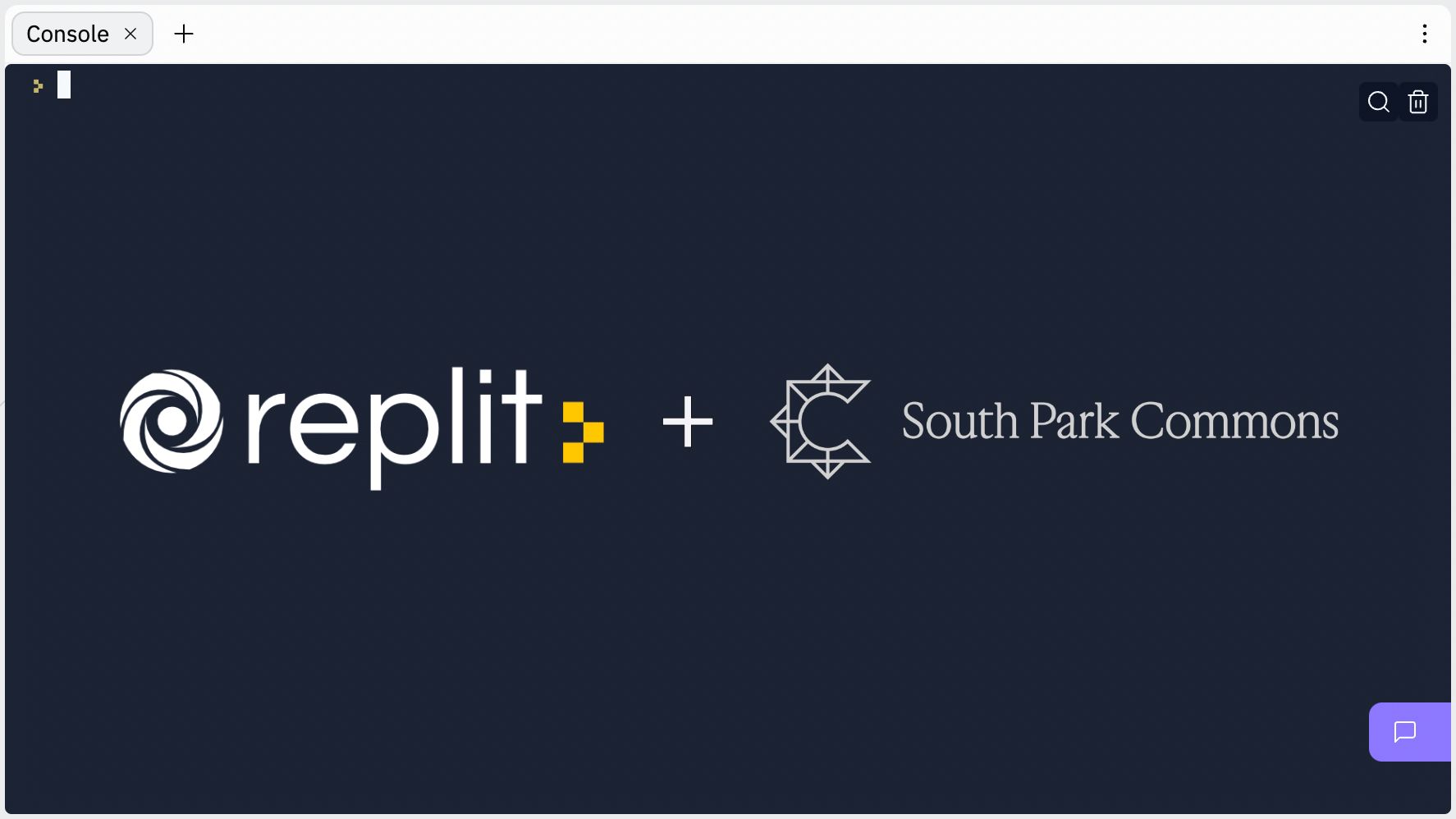Open Source Investing: Why SPC Backed Replit
Vision, leadership, and differentiation leave Replit well-positioned to onboard the next billion software developers.

Now that the SPC Fund has branched out into later stage investing along with our regular early-stage motion, we want to open-source more of our investment thinking. We’re excited to share this memo from fund Chief of Staff Bala Chandrasekaran on one of our recent later-stage investments, Replit.
Our thesis for investing in Replit can be broken down into four points we believe are true or will become increasingly true in the coming years:
- We believe in collaboration for software creation, an emerging trend in companies like Vercel, Figma, and, of course, Replit, becoming a key part of the development process.
- We believe development is going to shift away from local and single player to become increasingly real-time and multiplayer.
- We believe software will be a huge unlock for wealth creation, even more so than it is now, and there will be an increase in people learning how to code.
- We believe an increasing number of people learning to code will also increase decentralization of developers, and vice versa, further necessitating a multiplayer solution.
Replit sits squarely at the intersection of these four trends, giving us high conviction in the investment.
The Landscape
It’s easy to be reductive in Replit’s market and call it an IDE. Founder Amjad addresses this in an essay, “Repl.it is not an IDE,” where he writes:
When a new thing is invented, we're often stuck with the old words to define it. The first car was a "horseless carriage," and the first computer was a "giant brain." In the same inaccurate way, Repl.it is an "online IDE.
It’s easy to pattern match Replit with other IDEs. But properties like multiplayer and short-time-to-ramp increase Replit’s market opportunity and make it more like larger players serving different target markets, such as Figma and Vercel.
Vercel's main goal is to bring collaboration to frontend development. It allows many stakeholders (Engineering, Product, Marketing, Design, etc.) to be part of the frontend development process and encourages iteratively building a product. Similarly, Figma's main goal is to bring collaboration to design. They've built a world-class environment for designers to work collaboratively and cross-functionally.
The salient points for both of these products is their very short time-to-ramp and variety of multiplayer features that increase the LTV of customers. Replit has the same short time-to-ramp plus a multiplayer emphasis, focusing on collaboration in experimental code writing.
The experimental code writing market is more ambiguous than the target markets for Figma or Vercel, which actually makes it far more interesting to us since it’s not limited to software engineering or design teams. Instead, it encompasses tinkerers, professionals, and students, enabling them to all collaborate through Replit. It’s providing a multiplayer platform for learning and experimenting with code, something that has never been so accessible.
At SPC, we’re big believers that software development will increasingly shift toward multiplayer with a growing population of people who learn to code. On both these fronts we believe Replit is the product best-positioned to accelerate the shift.
Investing in cults
In Zero to One, Thiel and Masters make a provocative comparison between successful startups and cults.
Avichal, founder and GP at Electric Capital (and a former SPC member), made a similar point:
A common trend among highly successful startups is the cult-like following that forms around them, both inside the company and in early user bases. This following usually manifests from the top through leaders who are able articulate their vision clearly and rally a devout following. Replit CEO Amjad fits this archetype.
To understand why, and why we think this is a good thing, take some time to read his writing and specifically his Vision. In it he articulates a world where programming and collaboration are democratized, with Replit as the vehicle to bring the next billion software creators online. It’s a vision we believe in (as mentioned earlier), and it’s one Amjad is particularly well-suited to enact. He spent a formative part of his career as the founding engineer at Codeacademy, where he worked on adjacent problems related to making it easier for individuals to learn how to code.
Directly relevant experience along with a clear and compelling vision are the best ways to distinguish cult-like companies on a trajectory for success from cult-like companies where personality substitutes for a workable product or business model. Which is to say, Replit is a good cult worth betting on.
The Next Billion
The next billion people learning to program will onramp differently from previous generations, and Replit will have a large part to play in this.
Currently, Replit gets in front of users as an onramp for people learning to code. You’d think they were an enterprise company given their focus on collaboration features, easy onramping, and their stickiness with users. However, their target user base comes to Replit for educational purposes and then stays on long afterward. Given that this market is fairly busy with a lack of clearly defined swimming lanes, Replit’s ability to catch users at the top-of-the-funnel when they are just learning to code is a promising signal. Starting at the learning stage creates a powerful wedge, while Replit’s online community for feedback and learning keeps users in the ecosystem. A big part of their success will be figuring out more and more reasons for users to keep using the product long after they first learn how to code. We believe Replit will figure out how to become a lifelong partner for new programmers.
One imaginable future is that with its learning and feedback communities, Replit will fulfill the promise many saw in Stackoverflow. Another possibility is striking partnerships with cloud providers to create more reasons for users to continue building on the Replit platform. The point here is that as the first onramp for new developers, Replit is well-positioned to expand along with its users. Take a quick look at how strong a response Replit gets from new programmers and it’s easy to see both the positive cult signal and a future of massive growth.
A Post-IDE World
The secret to Replit succeeding long-term will be their ability to balance simplicity with extensibility. They need to be simple enough to catch top-of-funnel users who want to learn how to code but then offer an expanding feature set that keeps users on the platform after the initial learning stage.
Replit’s positioning is their first differentiator. Education is a strong wedge and if you believe, like we do, that software will be a huge unlock for wealth creation, even more so than it is now, then it becomes very clear that there will be an increase in people learning how to code. Replit is perfectly positioned to capture that user mindshare with their product.
Their second differentiator is community. Similar to Figma, where building a community of designers early was very crucial for the business, Replit’s emphasis on multiplayer learning and feedback make it sticky.
In a post-IDE world, we believe Replit will remain differentiated. It has clear vision for onboarding the next billion developers and a founder with the ability to get the buy-in necessary to accomplish that goal. We’re excited to be part of the ride!
